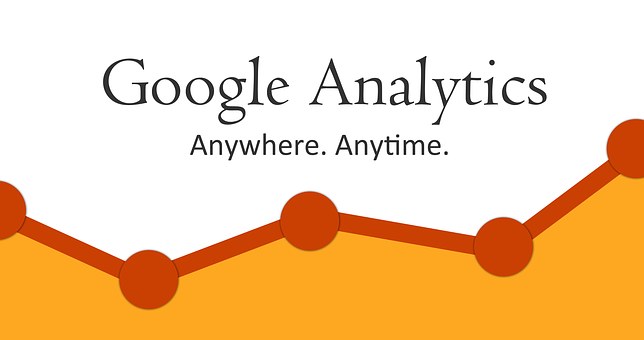This is the fifth instalment in the series of essays on Statistics Denial by Randy Bartlett, Ph.D. To read other articles in the series, click here.
“You cannot reason people out of a position that they did not reason themselves into.”
― Ben Goldacre, Bad Science
“It’s all in the algorithm”
— Dr. Rodney Mckay, Stargate Universe
Myth #1: Statistics consists of only certain ‘traditional’ techniques or those from STAT 201
The current buzz about big data and data science is generating interest and a sense of urgency. However, the promotional hype is accompanied by what we have elsewhere called “statistics denial.” This consists of a body of harmful misconceptions that conspires to leave those innocent of statistical understanding with the impression that there are these ‘new’ disciplines, which somehow transcend the old obsolete statistical analysis—traditional statistics. This impression is ‘grounded’ in straw man arguments that grossly mischaracterize applied statistics.
Traditional Techniques Straw Man:
One of the quaint straw-man arguments is that “statistics is limited to ‘traditional’ or ‘classical’ methods, such as those from STAT 201.” Consistent with the principle of “the big lie,” this assertion confuses as much as it misinforms. As innumerable enterprises, organizations, and the people that comprise them struggle to acclimate to an ever-renewing knowledge-based economy, the last thing we need is more confusion about how to extract useful information from avalanches of data.
The original use of the term ‘traditional’ was merely to differentiate older tools from newer ones. Statistics deniers have exaggerated this into a fantasy they appear to want to believe, i.e., that statistics ended its evolution in the 1940s. This is like mischaracterizing medical practice as only consisting of blood testing because that is what happened during their last physician visit. Not surprisingly, armed with this astonishingly fictive viewpoint, they lack the statistics understanding and vocabulary to articulate exactly what comprises ‘traditional statistics.’ Just ask them.
Here, for example, is a quote that conveys the feeling, “… you CANNOT bring the ‘baggage’ of traditional statistics into the analysis, or everything can get ‘messed up.’” Really?! This mischaracterization spawns from a rote, mechanical tool-based peek at statistics, rather than a holistic problem-based understanding. Mastering applied statistics requires field experience, as developed by generations of applied statisticians/quants. Also, no one should have the expectation that reading a text book, following recipes, or searching the internet will generate practice experience. There is simply no shortcut.
Reality:
There are these statistics problems as we clarified in the May/June 2015 issue of Analytics Magazine, ‘Preparing For The Coming Flood Of Statistical Malfeasance,’ http://goo.gl/Wod3gk. They all involve uncertainty with the numbers and this requires statistical inference.
Applied statistics embodies our approach to and way of thinking about numerical uncertainty. This is the traditional part. It borrows freely from everywhere, not limiting itself to some static set of algorithms taught in STAT 201. The ‘traditional techniques straw man’ is also like mischaracterizing mathematics to be all ONLY about addition, with no regard or acknowledgement for subtraction, multiplication, division or the multitude of other operations therein. This denies the completeness, synergy, and ongoing development of statistics, encouraging disconnected balderdash.

This play on words is deceptively hazardous. It means that, despite their feigned qualifications, promoters lack a fundamental understanding of what they are talking about. At the same time, they are not lacking in overconfidence or motivation to place their interests ahead of those of their clients. Misunderstandings are innocent. Deliberate mischaracterization of topics outside of your expertise and for personal gain is the stuff of hucksterism! It is all about sales.
When they replace applied statistics with their own half-baked unvetted corruption, they inevitably omit everything they do not understand. If their understanding of statistics is limited to a STAT 201, this would amount to a great deal.
Close:
In addition to unwanted confusion, this promotional hype is leading to another round of adulterating statistics and circumventing best practice. In ‘Blog 2: Statistics Denial, Statistical Debacles …,’ we discussed the harm. Once the safeties are removed, we are more exposed to statistics debacles like those at AIG, Fannie Mae, Moody’s, Fitch Ratings, S&P Ratings, Google Flu Trends, et al.
Applied statistics is not limited to some set of traditional tools or some promoter’s portrayal of it. There are no new techniques for data analysis that displace our ever evolving statistics.
We sure could use Deming, right now. Many of us, who consume or produce data analysis, hang out in the new LinkedIn group: About Data Analysis. Come see us.

The data analytics of substance abuse & treatment
The...









![7 data-driven ways to optimize your online store for mobile [Infographic]](https://crayondata.ai/wp-content/uploads/2019/11/optimize-1.jpg)


![Top tips and tricks to improving your customer experience [Infographic]](https://crayondata.ai/wp-content/uploads/2019/01/customer-journey-1.jpg)









